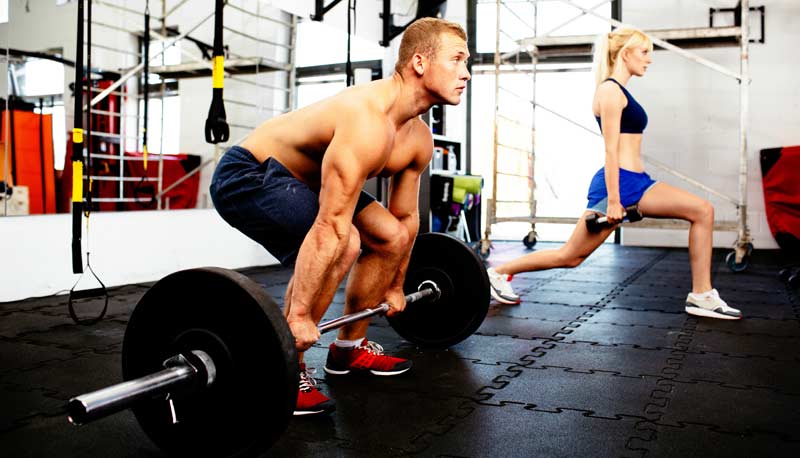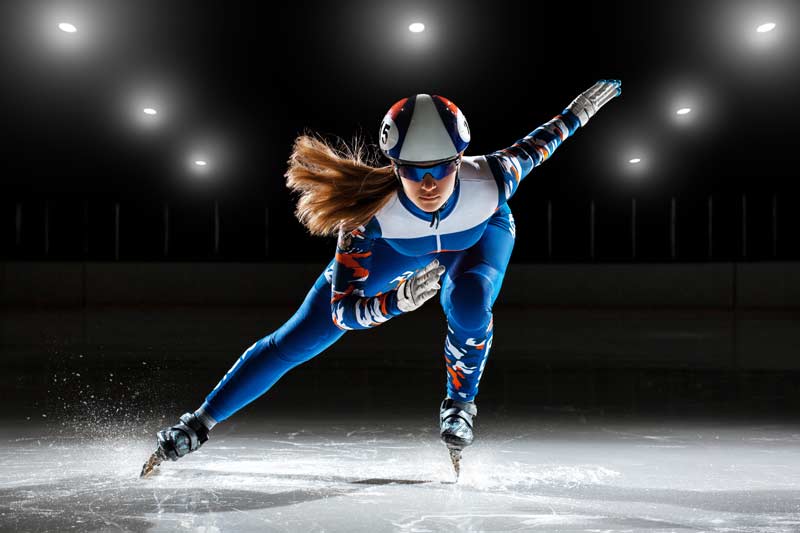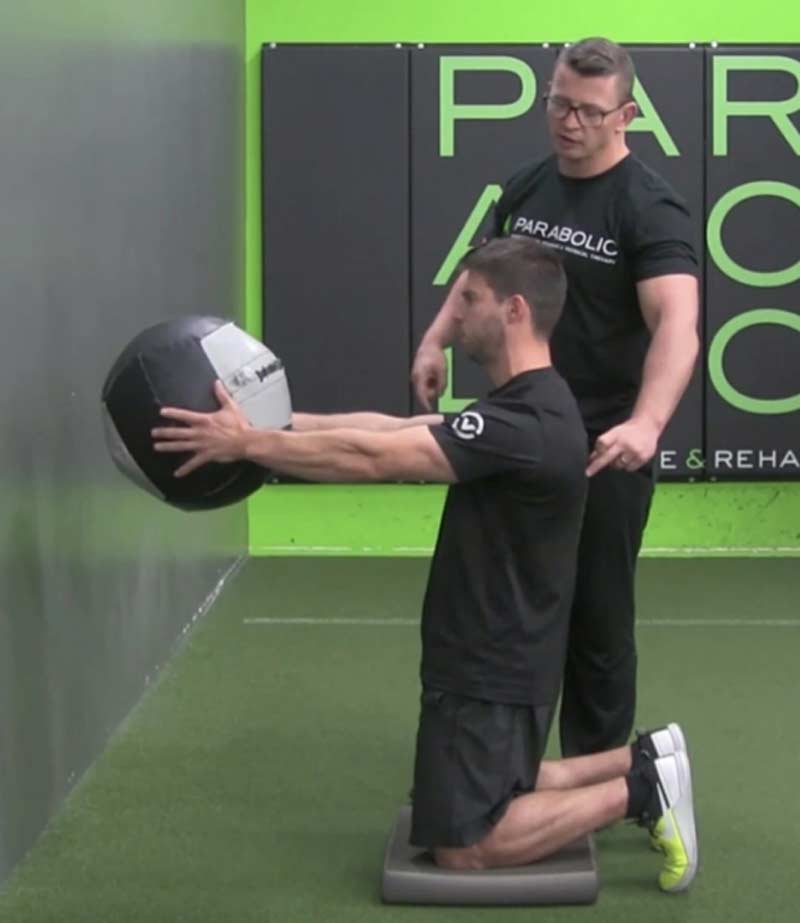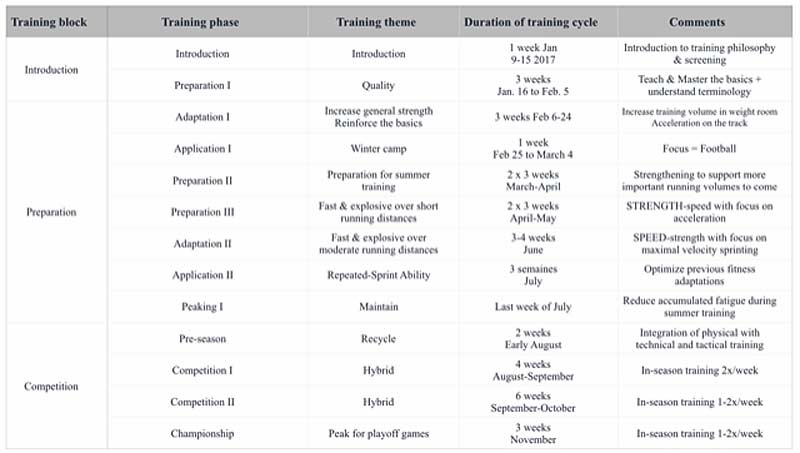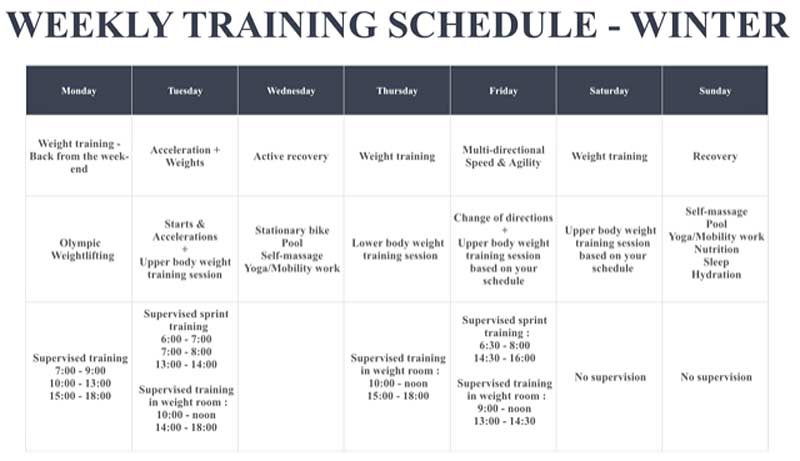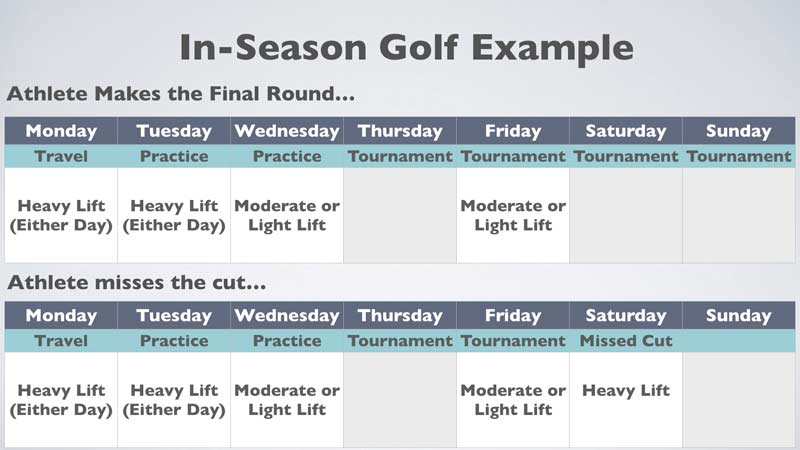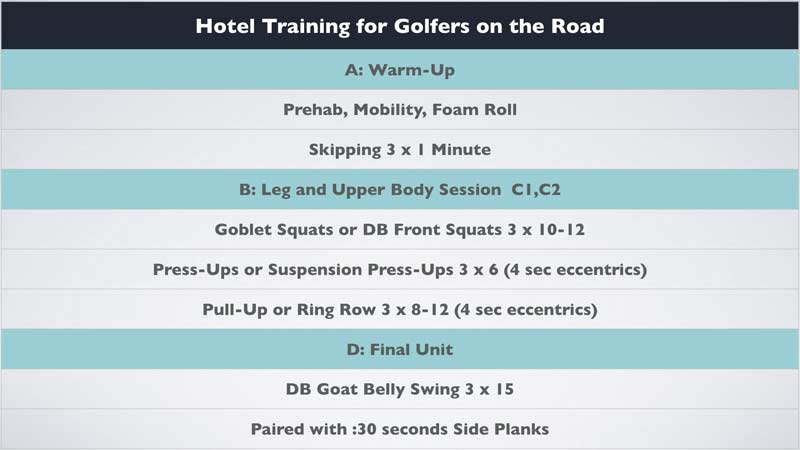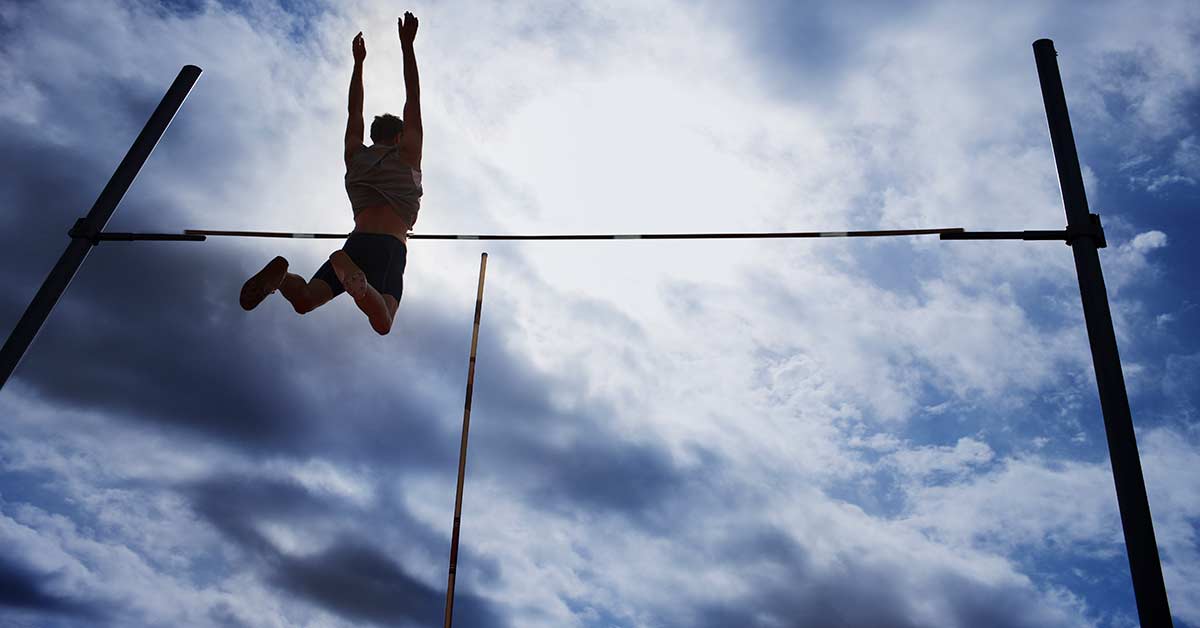
Each season, I look forward to the student-athletes who are just beginning their athletic endeavors for the first time. Freshman athletes—with minimal recreational or organized athletic experiences—are wonderful to coach, but developmentally, they deserve a training program that gradually eases them into the physical and emotional demands of their sport.
Today, sport at any age level has become a science. There is a surplus of literature about any sport available online, in print, or from peer-reviewed sources. The volume of information available can feel intimidating, but you don’t need to read everything written about your sport. In fact, reading everything available on your sport may confuse you more than support you. A basic, fundamental understanding will provide the necessary oversight to prevent injury, maximize performances, and allow these new athletes to enjoy a positive athletic experience.
My previous athletic experience prepared me exceptionally well for our grueling freshman track workouts. As a competitor, I didn’t realize that grinding out 2.5-hour high-volume, high-intensity workouts on a regular basis overwhelms and underserves the needs of all athletes, not just freshmen. Those workouts were ridiculous, but back then I lacked enough of a fundamental understanding of my sport to know that 2.5-hour workouts and a non-stop Monday through Friday practice schedule were an inappropriate use of my time.
In high school sports, athletes are not all equal. Less-experienced or younger athletes require shorter, age-appropriate workouts. A good coach moderates the volume of meters run, jumps taken, or weight lifted to prevent overuse injuries and raise the ceiling for performance of these individuals. As I mentioned earlier, the literature available is vast, but a consensus exists on the moderation of practice volume, especially for sprinters, jumpers, and throwers.
These principles prevent injuries, maximize performance, and foster a positive training environment. Share on XGood coaching never reinforces bad habits, like poor posture, by pushing athletes through fatigue or exhaustion.1Practice technical skills while athletes are fresh. Let them execute the skill correctly and back them off. This is just one fundamental principle of several presented in this article that work together to prevent injuries, maximize performance, and foster a positive training environment for athletes.
The seven principles presented originated in track and field, because this is the sport I coach and understand best. The principles are not absolutes, but they apply in most contexts. I rely on track and field as a model because many of the raw athletic skills necessary for other sports are embedded within the fitness and coordination developed within track and field. Again, instead of telling you to read everything you can get your hands on, I have attempted to condense the most widely accepted ideas in track and field down to seven fundamental principles to support your coaching.

The Athlete Is No. 1
In scholastic sports, coaches are there for their athletes. I love winning and you should too, but if you strip the fun out of this sport for the cost of winning, you’re not going to have a team any athlete wants to compete for. Chances are your team probably won’t win anyway. We gain buy-in for the team when athletes want to be there. Practices can and should be fun. Athletes should improve each successive year. If your athletes are not having fun, or improving, then it’s time to reflect on your coaching philosophy.
If your athletes aren’t having fun, or improving, it’s time to reflect on your coaching philosophy. Share on XKids try new sports because they want to be successful. I believe athletes have the right to choose their event. Athletes should own their event, and our job is to guide them to success. They will make mistakes and that’s okay, but no coach needs to explicitly tell an athlete that they’re terrible at their event.
If an athlete really is pretty bad at their event, you have choices:
- Let them stick with it because they still enjoy practicing and competing for the team.
- Encourage them to shift their passions to a different event. Recommend a new event for them.
A good coach guides, teaches, and educates—they do not dictate. That’s how athletes lose interest. Everybody likes choice, so why not compromise?
When you’re coaching a drill or an exercise in practice, devote your undivided attention to each athlete performing that skill. Athletes expect and demand our critical but caring attention, and we can give it if we plan appropriately. If you bounce around between events and never spend adequate time observing, recording, and providing feedback to your athletes individually, then you’re not serving their needs. Remember, we do this for them. Athletes are No. 1.

‘Emancipate Yourself from Volume’2
Less is more. There are three high school coaches who hit this point harder than any others: Latif Thomas, Tony Holler, and John Brumund-Smith. It’s important for athletes to walk away from a workout on Monday and recover fully for another workout on Tuesday. Previous athleticism goes a long way in supporting an athlete’s experience in a new sport, but too much volume will shut down any athlete, as it did for me on our most difficult days.
Again, 2.5-hour high-volume workouts are ridiculous. No athlete needs more than two hours in a given practice session and no workout should focus on high-intensity, high-volume fitness for the same duration. If you want to be fast, then forget workouts like a 10x100m or 4x300m. High-volume speed endurance workouts of more than 800-1000 meters will not drop times. Instead, they will reduce coordination, erode recovery, and overuse your athletes’ muscular-skeletal system.
Too often, coaches prescribe interval and aerobic work for their sprinters. Getting through a “hard” workout becomes more important than the coordination necessary for good technique. Overtraining overloads the central nervous system and the average high school body eventually breaks down from overstimulation. Volume workouts do not build speed—they overuse and abuse, and your athletes lose.
Volume workouts do not build speed—they overuse and abuse, and your athletes lose. Share on XAccording to Coach Tony Holler (from Plainfield North High School), athletes should train the minimum effective dose. Holler says, “We train at 100 mph so that 80 mph feels comfortable.”3 In most sports, speed is the key that unlocks all gates. Sprinters deserve the correct balance of “acceleration (high intensity runs of 2-4 seconds), top end speed/maximum velocity (high intensity runs of 4-8 seconds), and speed endurance (high intensity runs of 8-15 seconds).”3 In track and field, “speed creates endurance, endurance does not create speed.”
Never push your athletes through exhaustion because “10% undertrained is better than 1% overtrained.”2 This applies to the track and to the weight room.4 I would rather my athletes task their muscles on Monday and recover for practice on Tuesday than exhaust them on Monday so much that they lose Tuesday, Wednesday, and Thursday entirely. By reducing the volume in a training session, our athletes return to practice the next day hungry, healthy, and ready for another great session.

Practice Technical Skills at Least 3 Times Per Week
If you want to train great jumpers, then you have to let them jump… often! The same is true for throwing, sprinting, hurdles, and even distance running! Sprinting is sprinting is sprinting. Each event has its unique challenges for the human body.
Your athletes must acclimate to their functional motions and to the resistances—weighted or gravitational—applied to their bodies. They must experience these challenges frequently. For example, in competition, sprinters will wear spikes, but if in practice “they aren’t wearing spikes, they aren’t sprinting.”5
Before the 2017-2018 indoor season, I primarily coached shot put. We had some weight throwers who competed well, but I wasn’t very familiar with coaching the weight so I didn’t give it a lot of attention. At the end of last year, I knew that I would have to train a new crop of young throwers. Plus, there were easy points to score at our county championship because the weight throw was relatively uncontested.
Each week, I devoted at least three practice days to weight throw technical drills and at least two out of our four practice days in the weight room getting my athletes stronger, acclimating them to the resistances experienced while executing their functional motions. We threw weight for 30 minutes with ample recovery time every Tuesday and Thursday. On Mondays and Fridays, we practiced smooth entrances with our arms, lots of spinning footwork, and weighted bar spins in classrooms.
We mocked competition as much as possible, whenever and wherever possible. My sophomore boys, Tim and Brandon (pseudonyms), improved their season best performances by 11 ft. 3 in. and 7 ft. 0.5 in., respectively. In our sophomore all-city championship, Tim threw 28 ft. 9 in. and finished sixth, while Brandon threw 32 ft. 5 in. and finished second.
Brandon improved steadily over the course of the entire season while Tim struggled with his form all season long. Tim’s technique only started coming together in the last two weeks of our season, but when Tim uncorked a 6-foot improvement on his personal best, the atmosphere became instantly electric. Suddenly, his competitors looked worried. Functional movement must be reinforced in practice frequently if athletes wish to see improvement in their performance, like Tim or Brandon did this past season.
I did not become a more knowledgeable weight throw coach this past season. I became a more attentive observer and a more critical voice. Most importantly, I created the time and space for my weight throwers to focus deeply on their functional motion. I encouraged all my throwers to practice their footwork in the hallways between classes, swing their backpacks like the weight, and show off these skills to their very confused friends. Tim and Brandon demonstrated to me and our team that a commitment to functional movement leads to more confident coordination and improved performances.
A commitment to functional movement leads to more confident coordination and improved performances. Share on XBeyond practicing the event, coaches should provide weight training exercises that correlate directly with the functional motion. For example, javelin throwers should rotate their arms for warm-up and use band-resisted mechanics, multi-directional flys, and axe chops with a weighted bar to access their functional motion. In the weight room, shot putters should rely on the incline bench press, deadlift, squat, clean, and medicine ball throw from standing and supine positions.
Jumpers need to be in the air, but more importantly, jumpers need to practice their approach on the runway. Every step matters on the runway. Practice stride-stride-long-short jumps, box jumps, and 1-step pop-ups into the pit.
Each event has a set of requisite functional motions that should be drilled at least three times per week in practice. Whether it’s sprinting, throwing, jumping, or hurdles, athletes must execute their functional motion at maximal effort regularly.

‘If Your Coach Can’t Explain How a Drill Translates to Your Performance, Don’t Do That Drill.’6
Drills reinforce each technical element of performance. Why teach a drill that doesn’t have a direct benefit to an athlete’s event? I’ve seen a lot of pointless exercises that reinforce motions completely absent from an event’s necessary biomechanics. If you want to train better sprinters, then they need to sprint. Building arm strength and resilience to fatigue happens in slow, controlled settings, like in the weight room, with flys, pull-ups, and push-ups. Hurdlers gotta hurdle; throwers gotta throw.
When I train discus throwers, we use the South African drill to improve vestibular control over angular momentum. This drill isolates the spin and improves an athlete’s self-awareness while spinning. I use this drill for discus throwers because it’s easy to observe, easy to analyze, and translates directly to performance.
Rather than overload athletes with information, provide them with the knowledge to find success. Share on XWhen one of my athletes asks me why we use the South African drill, I tell them exactly what you just read. If they have further questions, I answer those questions too. As a coach, you need to be ready and willing to answer your athletes’ questions. We don’t need to overload our athletes with information. Rather, we need to provide them with the necessary knowledge to find success.

Sequencing Matters!
Never begin a practice session with slow strength exercises like core or weightlifting. This will fatigue your athletes’ muscles and weaken their joints ahead of technical drills when they need to be fresh. What benefit is there in wobbly sprinting or jumping with a weakened core?
When an athlete trains in a fatigued state, their body compensates with poor form, and then reinforces that poor form in subsequent technical exercises. This is how injuries occur. Forget the slow stuff first. If you’re sequencing core and strength before their technical, dynamic/plyometric, or cardio workouts, then you’re practicing in an unnecessarily fatigued state and increasing the chance of injury.
Sequencing matters. Functional movement matters. I recommend following this sequence for all practice sessions:
Technique > Sprinting or Plyometric Drills > Cardiovascular Workout > Strength Exercises
In a 1.5-hour practice, select no more than two of the above training modes and devote 30-45 minutes to each. For example, if middle distance athletes are going to complete a plyometric circuit and a long run for cardio, then make sure that the plyometric circuit precedes the run.
Plan and sequence all practice sessions carefully to support the health and safety of your athletes. Share on XHere’s another example. When pole vaulters practice, they combine both technique and sprinting in a single 45-minute session, which can be followed by a strength lift in the weight room. It’s okay if the vaulters don’t sprint on the track that day because they completed relatively decent speed work from their 3-, 4-, and 5-step practice jumps. Save a true, sprinting workout for the vaulters on their next practice day. All practice sessions should be planned and sequenced carefully to support the health and safety of your athletes.

Plan Collaboratively
All coaches of individualized sports, like track and swimming, should be aware of what their athletes wish to accomplish at the beginning of the academic year. At the beginning of the year (not the season!), ask your athletes about their goals for the season. Develop a plan based upon their goals.
When you plan collaboratively, you know where you’re headed together. The old saying has merit: “When you fail to plan, you plan to fail.” Sometimes, it might seem that planning is a futile endeavor because your athletes get sick, go on college visits, have a lot of homework, etc. However, some planning is better than no planning at all.
I believe that it’s important for coaches to establish open and honest communication about their athletes’ academic commitments, extracurricular activities, and familial obligations. A great coach can balance their athlete’s time comfortably for both parties. Develop a plan and stick with it. Embed flexibility into your plans. Write your plans down!
Instead of responding to breaks, like holidays or mid-terms, as they happen, plan ahead with those breaks in mind. In fact, don’t even treat them as impediments to the training schedule. They do not obstruct training if they are always in the schedule each year. Let your athletes have the time off that they deserve, but provide them with adequate resources to maintain their fitness independently. Your best, most committed athletes will not back off.
Instead of treating school breaks as impediments, plan for them in your training schedule. Share on XTreat any break away from school as a part of the normal training schedule. Plan together and be flexible. You deserve no apology from your athletes for missing a practice or a meet if you never bothered to plan with them in the first place. Care about your athletes as individuals beyond just track and field. Their success reflects well on you. Planning ahead demonstrates investment in, and accountability to, each other’s goals and needs.

Be Positive and Have Fun
If your athletes don’t enjoy practice, then why should they show up in the first place? Athletes are never one-dimensional. Most new athletes don’t show up for practice because they already love track and field, or want to be worked into the ground. No, they show up because they expect an all-comers sport like high school track and field to be fun and engaging. These athletes probably think that their initial, flirtatious affair with an all-comers sport will not overcommit their time. I don’t see anything wrong with that.
It’s important to keep young athletes engaged and motivated so that they will gradually commit more time to the team in the future. Furthermore, as young athletes age and adapt to a greater commitment, you can help them develop their organizational skills to balance schoolwork with practices and competitions.
Young, supported athletes grow into mature, experienced athletes that excel in performance because they know how to balance training with their other obligations. This careful balance relieves undue stress and clears the mind for competition. It’s our job to build athletes for the future, not just the season. Plan ahead and keep them engaged.
It’s a coach’s job to build athletes for the future, not just the season. Share on XPlay games that have athletic benefit in a track and field practice. A dynamic warm-up doesn’t have to occur on the same 40 meters every day. Try substituting part of your dynamic warm-up routine with games like Everybody’s It, or Lions & Tigers. Games help warm up muscles and games are fun.
For jumpers and hurdlers, use an obstacle course to support plyometric training. Set up hurdles to sprint, hurdles to jump (see Stefan Holm’s video), step ladders for coordination and quickness, mini-hurdles for good sprint form, and cones for hip strength and ankle mobility. Complete time trials of the obstacle course. Set it up differently the next time. Your athletes will walk away from an obstacle course practice fired up for next time.
The throwing events are no throwaway for fun. Coordination is a crucial biomotor skill in the throwing events, so you should have the opportunity to practice it. It’s also really easy to train coordination with informal games. Spread Hula-Hoops out on a field and assign points to each hoop. Set a timer or limit the total number of throws per round. Whoever has the most points at the end of three rounds wins the game. I call that game “Shotty Hoopla.”
For the discus, ask each athlete to bring in an old mop and scatter them in the field. Place them in a formation that supports your discus throwers’ weaknesses, like releasing early or late. Knock the heads off the mops! Or, if you’ve got limited space, chalk up your practice shot and throw for height against a wall. Vary the distance or angular distance for javelin and award points based on the coordination goal for that day. Keep games informal, with healthy competition. If you want to keep track of the points over the course of the season, that’s up to you.
When your distance runners go on those long, slow cardio runs, have them set a timer and tell them to avoid looking at their watches. Instead, encourage them to tell jokes and be creative with their time. Here’s a good one: Imagine your favorite teacher is a superhero. What is their superpower? What does their costume look like? “Oh, look at that! Two minutes left in our 40-minute run. Where did the time go?”
Build a team culture that reinforces participation, as it’s an unmistakably powerful motivator. Share on XThe focus should always be infectious positive energy. When your athletes have fun at practice, their emotional fuel tank fills up and inspires them to return for more. As coaches, we must build a team culture that reinforces participation. It is an unmistakably powerful motivator.
A Glimpse of the Ideals
When athletes arrive at practice, I hope that they enjoy training for the improvement they will achieve in performance and for the community we build together in a season. Our small, isolated school communities represent a larger community of youth coaches, who embody this sport for everyone involved. We need to support each other. Good coaches teach other coaches, spread our knowledge to our athletes, and open ourselves up to feedback.
We all run our teams differently, but these seven principles offer a glimpse of the ideals for track and field, and other sports. Some of the principles require a shift in mentality or expectations, while others require more careful planning. Without reservation, I believe that we can implement all seven principles effectively. Any coach that does will most assuredly improve their athletes’ performance and the culture of their team.
*Special thanks to Branko Miric for his constant support of my coaching and his unrelenting pursuit of excellence in the pole vault community.
Since you’re here…
…we have a small favor to ask. More people are reading SimpliFaster than ever, and each week we bring you compelling content from coaches, sport scientists, and physiotherapists who are devoted to building better athletes. Please take a moment to share the articles on social media, engage the authors with questions and comments below, and link to articles when appropriate if you have a blog or participate on forums of related topics. — SF
References
- Thomas, L. (2018, April 30). “3 Reasons Why Sprinters Fall Apart at the End of Races.” Retrieved from Complete Track & Field: https://www.completetrackandfield.com/3-reasons-sprinters-fall-apart/
- Thomas, L. (n.d.). “Emancipate Yourself From Coaching Slavery, None But Ourselves Can Free Our Sprinters!”. Retrieved from Complete Track & Field: https://completetrackandfield.com/cst3/plc2-freedom-from-sprints-coach-slavery
- Holler, T. (2016, December 17). “The Survival of King Mithridates.” Retrieved from Illinois Track & Cross Country Association: http://itccca.com/12626/2016/12/the-survival-of-king-mithridates/
- Halson, S. L. (2014, September 9). “Monitoring Training Load to Understand Fatigue in Athletes.” Sports Medicine, pp. 139-147.
- Holler, T. (2018). “Can Your Kid Sprint?” Retrieved from SimpliFaster: https://simplifaster.com/articles/can-kid-sprint/
- Quote from Branko Miric (August 2017).
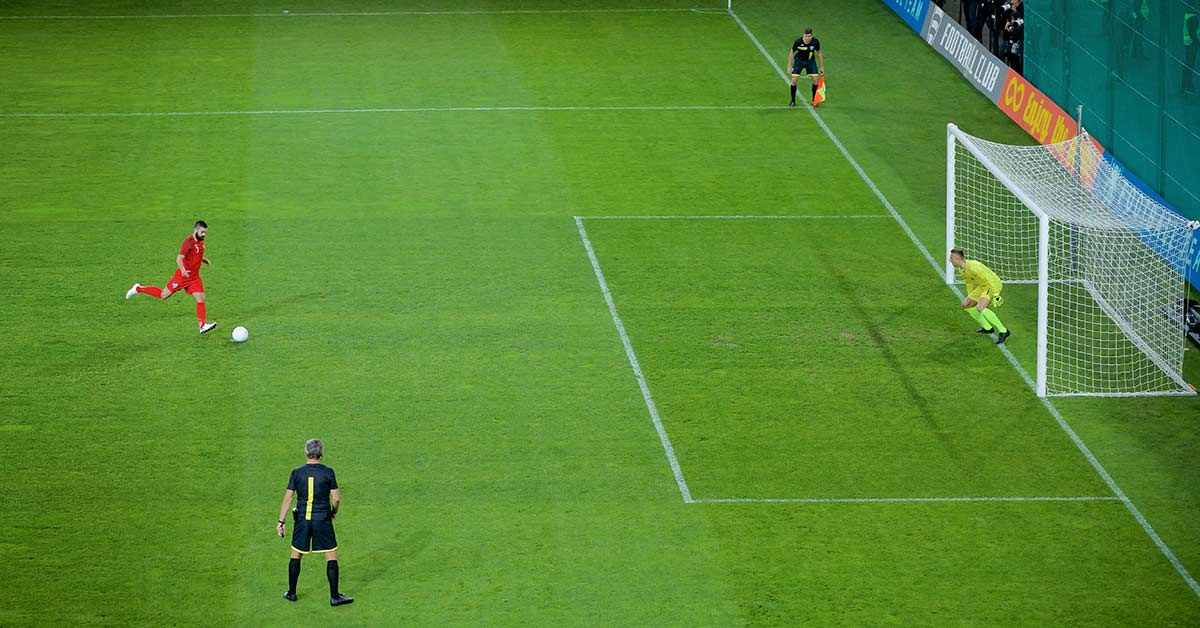

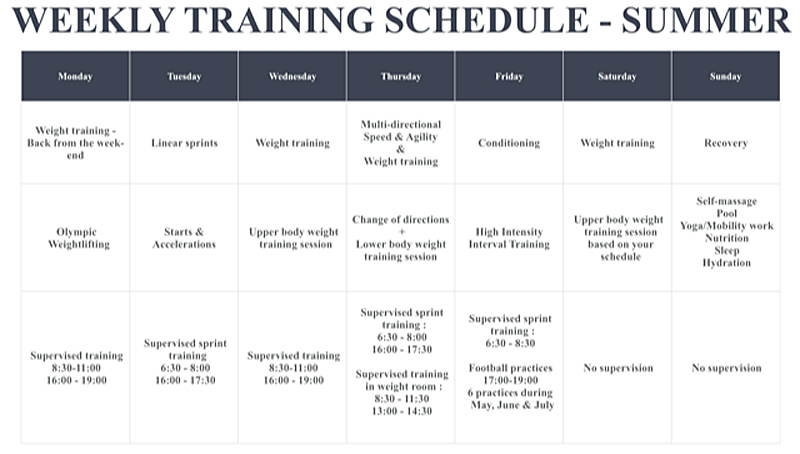



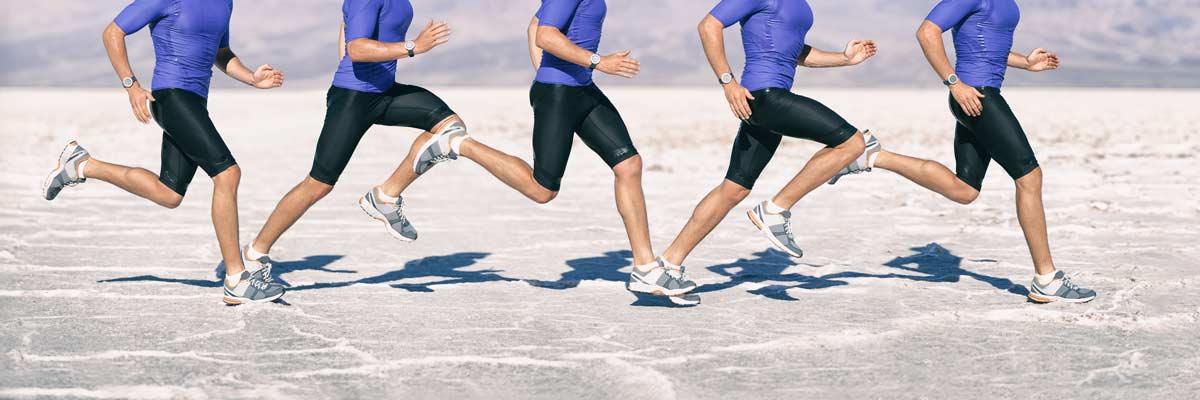
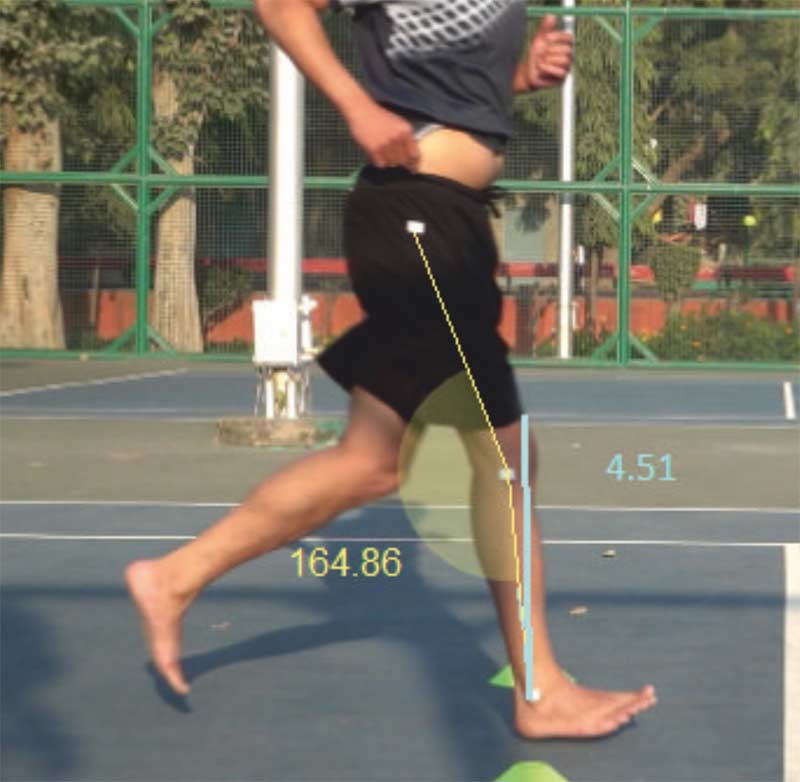
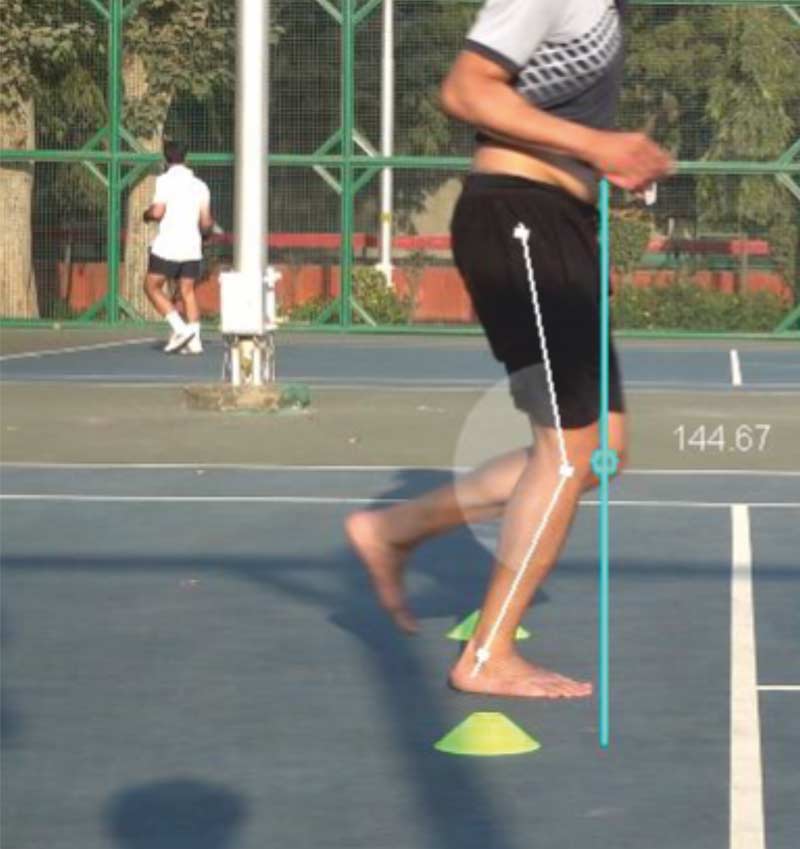
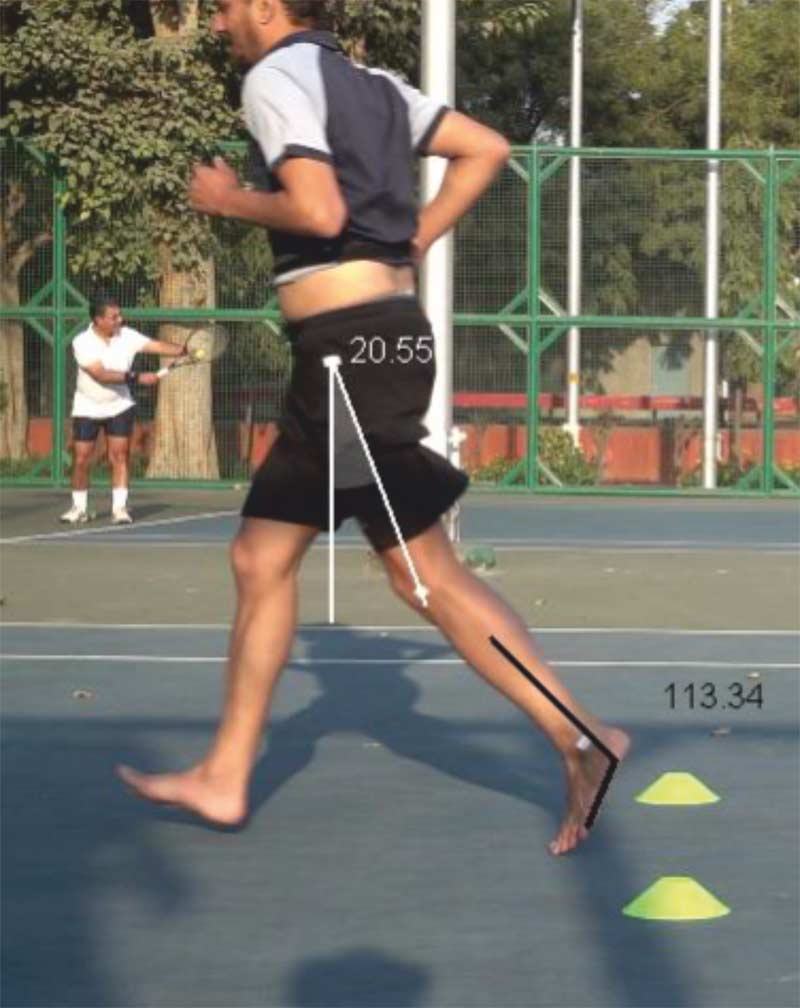
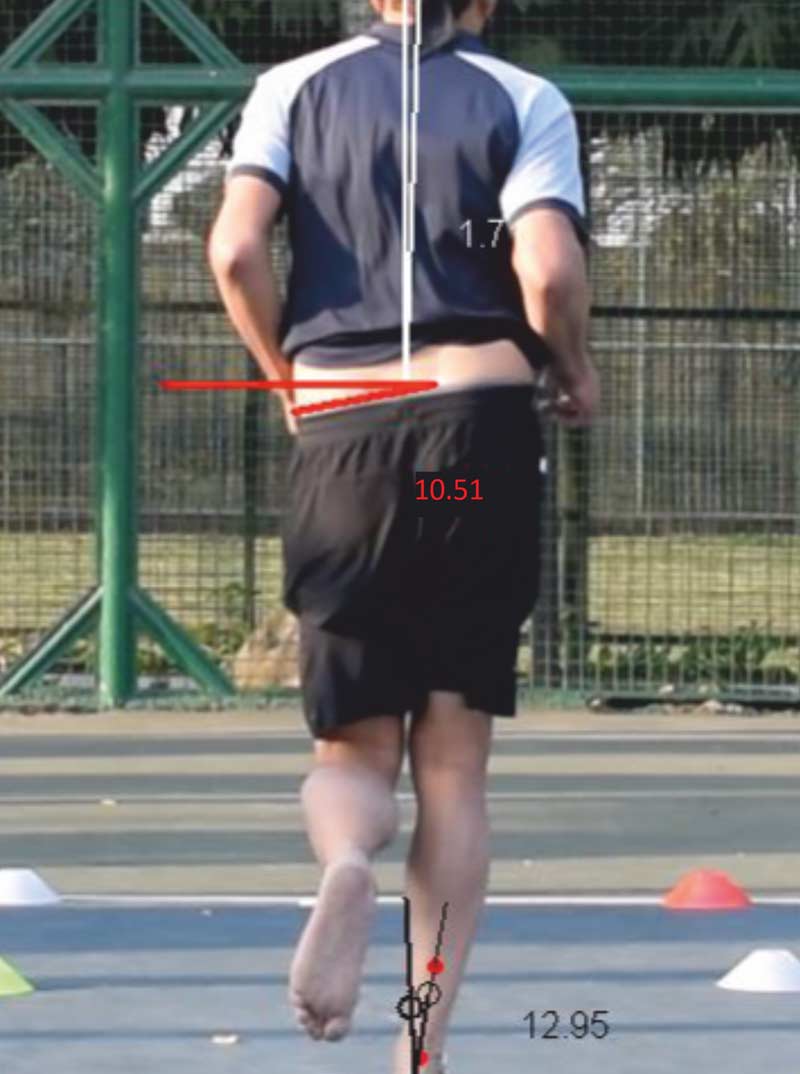

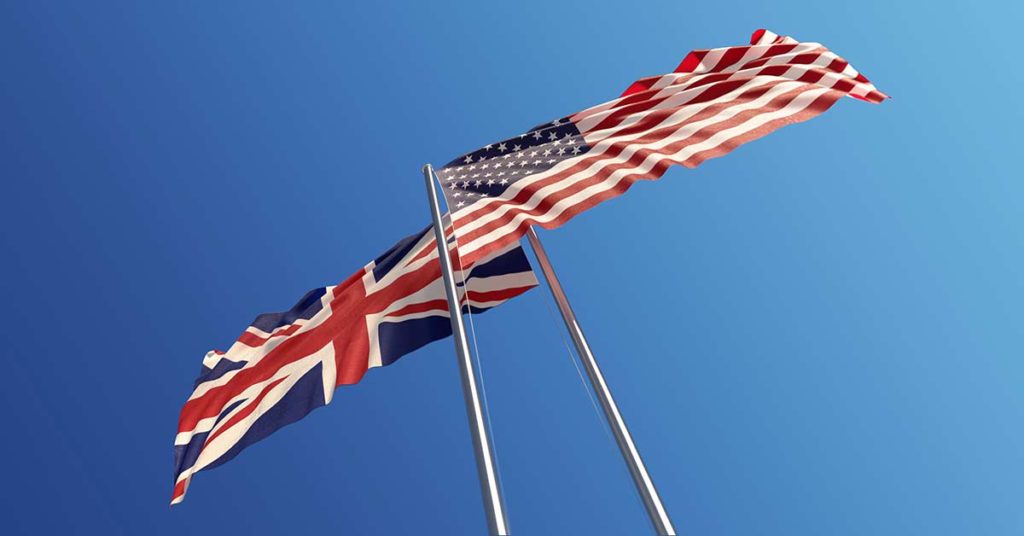


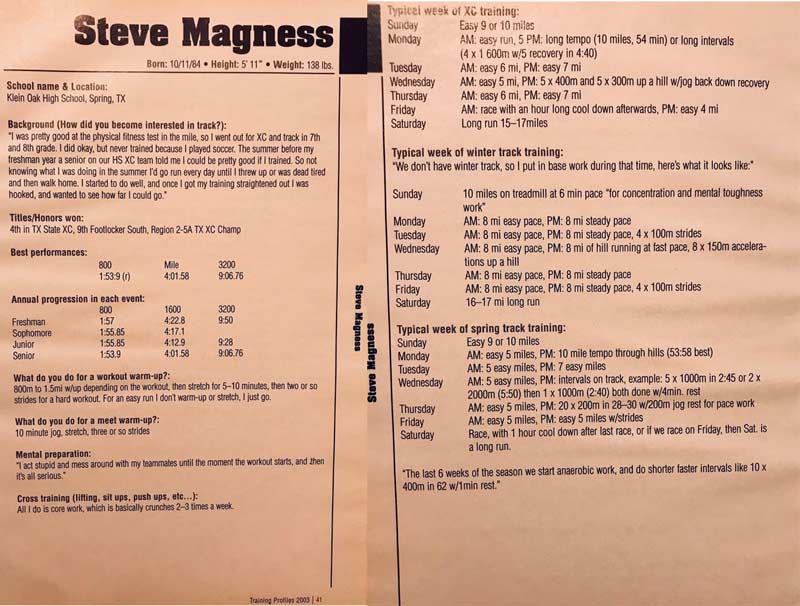
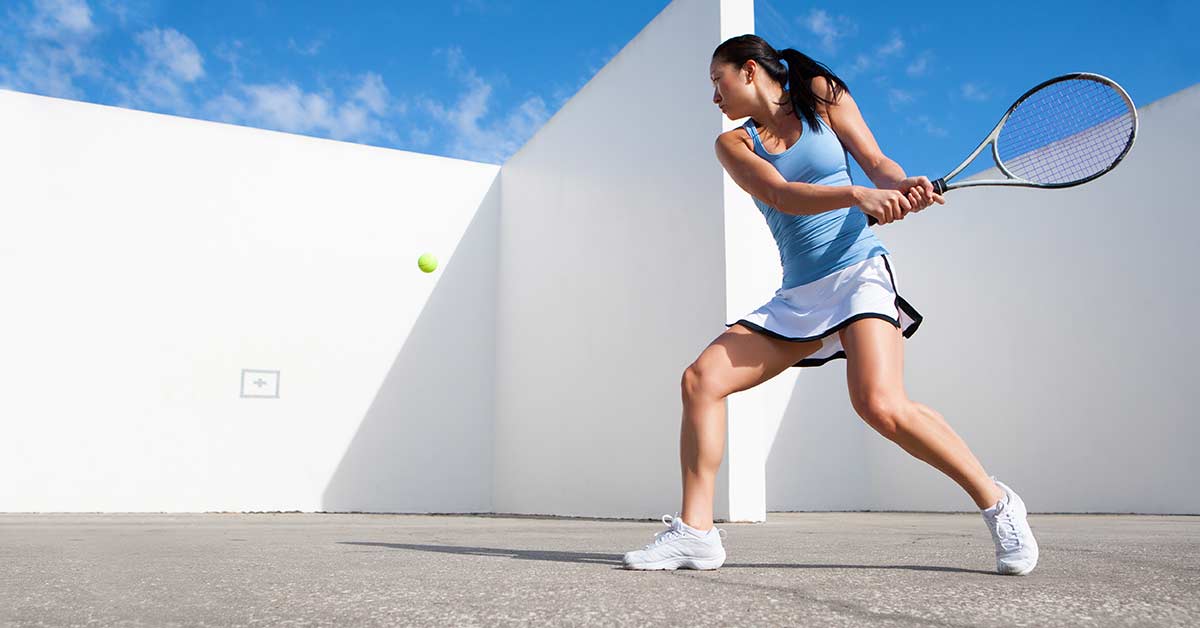
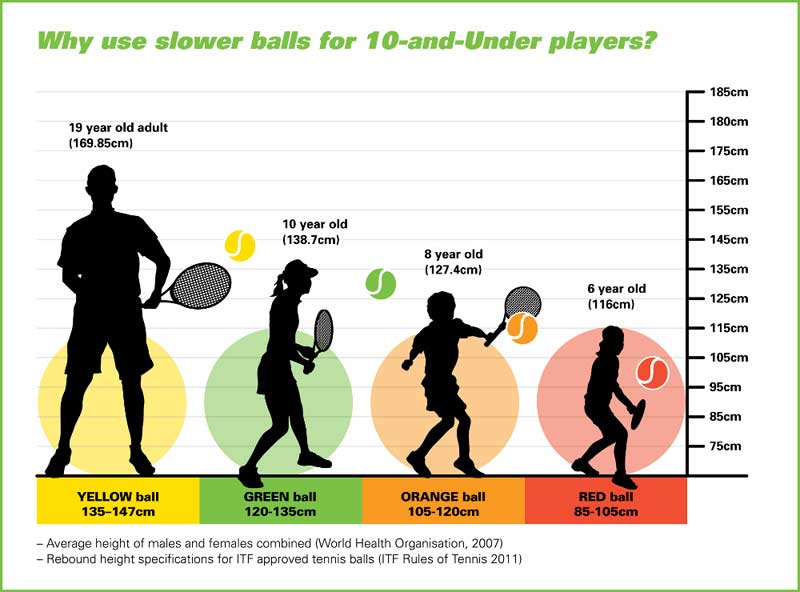


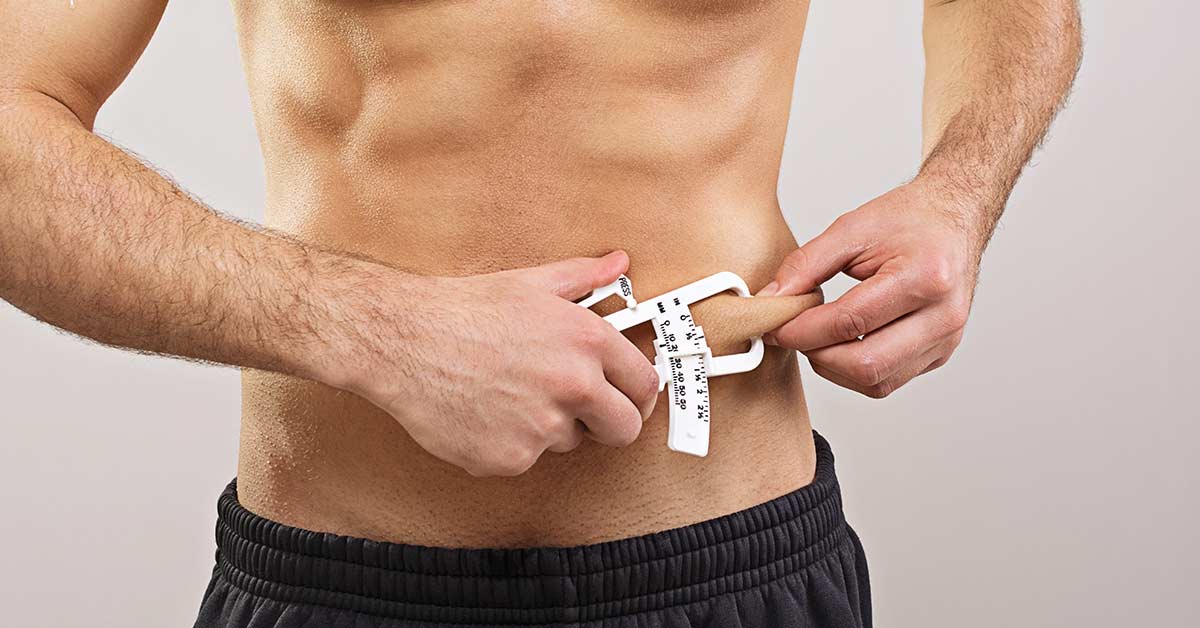

 Dr. Moon is an experienced researcher and advisor in the field of human body composition analysis and sports supplements. He has presented over 50 lectures at multiple scientific conferences and events both nationally and internationally, and has published more than 140 research articles and abstracts in dozens of journals. Additionally, Dr. Moon has written a book chapter and published a book in the areas of sports nutrition, supplements, exercise science, body composition, body water, and changes specific to age, fitness level, and type of athlete. Dr. Moon is also a co-founder and the Chief Science Officer at FitTrace.com, a body composition management and analysis app. He currently holds faculty positions at Concordia University Chicago and the United States Sports Academy.
Dr. Moon is an experienced researcher and advisor in the field of human body composition analysis and sports supplements. He has presented over 50 lectures at multiple scientific conferences and events both nationally and internationally, and has published more than 140 research articles and abstracts in dozens of journals. Additionally, Dr. Moon has written a book chapter and published a book in the areas of sports nutrition, supplements, exercise science, body composition, body water, and changes specific to age, fitness level, and type of athlete. Dr. Moon is also a co-founder and the Chief Science Officer at FitTrace.com, a body composition management and analysis app. He currently holds faculty positions at Concordia University Chicago and the United States Sports Academy.
